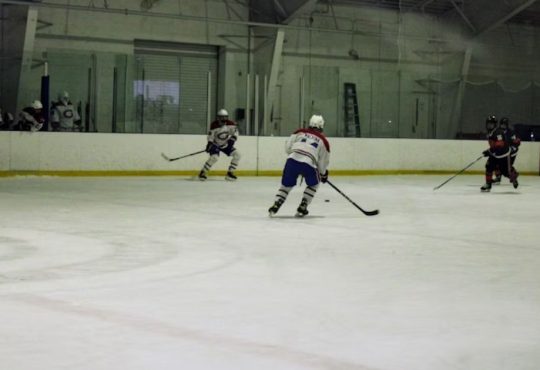Volleyball is a sport enjoyed by millions worldwide, thanks to its fast-paced gameplay, accessible rules, and dynamic team structure. Whether on the beach or in a gymnasium, volleyball’s appeal lies in its simplicity and the high level of skill required for effective teamwork. However, for those unfamiliar with the game, understanding the core rules and scoring system can significantly enhance one’s appreciation of the sport. This guide will provide a comprehensive look into the basics of volleyball, including the rules, team structure, scoring methods, and fouls, making it easier to enjoy playing or spectating.
Court and Equipment Basics
The standard volleyball court is rectangular, with dimensions of 18 meters in length and 9 meters in width. This court is divided by a net that stands at a specified height based on the gender of the players:
• Men’s net height: 2.43 meters (about 7 feet 11 5/8 inches).
• Women’s net height: 2.24 meters (about 7 feet 4 1/8 inches).
Within each side of the court, an attack line (also known as the 3-meter line) is marked, 3 meters away from the net. This line separates the front row players, who are primarily responsible for attacking and blocking, from the back row players, who handle defensive duties like receiving serves and digging spikes.
Each team’s area is divided further by lines indicating zones and boundaries. The lines along the edges of the court mark the in-bounds area. If the ball touches these lines, it is considered in play. There’s also a baseline at the back of each side where the server stands to initiate play.
Basic Equipment
The essential equipment for volleyball is simple and includes:
• The Volleyball: Weighing between 260 and 280 grams with a circumference of about 65-67 cm, it’s lightweight, which allows for high-speed play and powerful hits.
• Net and Antennas: Two antennas, thin rods placed vertically on each side of the net, act as boundary markers. A ball hit outside the antenna is out of bounds.
With only a few pieces of equipment required, volleyball is accessible to players of all ages and skill levels, making it one of the most popular sports globally.
Team Structure and Positions
In volleyball, each team consists of six players on the court, with specific roles assigned based on the game’s requirements. The lineup includes three front-row players and three back-row players, each with unique responsibilities:
• Outside Hitters (Left/Right): Primarily offensive players who specialize in spiking the ball over the net, often positioned in the front row. They also help in blocking opposing attackers.
• Setter: This player is akin to a team’s quarterback, handling the ball to set up attacking players, especially the hitters. The setter typically touches the ball on the second play of each rally.
• Middle Blocker: Positioned at the center of the front row, this player’s role is crucial for both offensive attacks (like quick spikes) and defensive blocks against opposing hitters.
• Libero: A defensive specialist easily identified by a contrasting jersey color, the libero can substitute in and out for back-row players without rotation restrictions. They are skilled at receiving serves and digging (defending) against spikes.
These players rotate positions after winning a serve, ensuring all players cover each part of the court at different points in the game. This rotation is a unique feature of volleyball and requires players to be versatile, adapting to both offensive and defensive roles as they change positions.
Starting the Game
To begin a volleyball game, a coin toss determines which team will serve first. After the toss, the winning team selects their preferred starting side and either the right to serve or receive the serve.
Serving Rules
The server starts each rally by serving the ball from behind the baseline:
• Position: The server must stay within the court’s width but behind the baseline until they make contact with the ball.
• Types of Serves: Servers can use an underhand, overhand, or jump serve, each requiring different levels of skill and resulting in varying effects on the ball’s trajectory.
• Faults: A serve is a fault if it lands out of bounds, fails to cross the net, or if the server’s foot crosses the baseline before striking the ball (foot fault).
The serve initiates each rally, and a successful serve that is difficult for the opposing team to return can instantly shift momentum in favor of the serving team.
Gameplay Rules and Player Movements
After the serve, teams play through a series of touches to pass the ball back and forth over the net, following specific rules:
Three-Touch Limit
Each team has a maximum of three contacts with the ball to return it over the net. Typically, teams use the sequence of bump-pass, set, and spike (hit). The setter often makes the second contact, creating an ideal setup for an attack.
Player Roles
• Setter: The setter’s role is to ensure a high, controlled pass to an attacker, creating opportunities for spikes or strategic placements.
• Spiker (Attacker): The spiker or hitter jumps to strike the ball with force, aiming to place it where the opposing team struggles to defend.
• Blocker: Blockers stand near the net, extending their hands to prevent spikes from crossing into their territory.
Teams need to communicate constantly, calling out each other’s movements to ensure seamless play. The three-touch rule encourages teamwork and strategy, making volleyball an engaging sport that requires precision and quick reflexes.
Net and Boundary Rules
Players cannot touch the net, cross the centerline, or step out of bounds when hitting the ball. Doing so is considered a fault, awarding a point to the opposing team. This rule ensures safety and fairness, as contact with the net or encroaching into the opponent’s space would disrupt the flow of play.
Scoring System
In volleyball, the rally scoring system allows points to be scored on every rally, regardless of which team serves. Here’s a breakdown of how scoring works:
• Rally Scoring: Teams score a point whenever they win a rally. A rally is won when the opposing team cannot return the ball in three touches, hits the ball out of bounds, or makes a fault. Rally scoring is fast-paced and adds intensity, as each point directly contributes to the game’s outcome.
• Winning a Set: A set is played until one team reaches 25 points, with at least a 2-point lead. If the score reaches 24-24, play continues until one team achieves the required two-point margin.
• Winning a Match: A volleyball match is typically played as a best-of-five sets. The first team to win three sets wins the match. If a match reaches a fifth set, it is played to 15 points with the same 2-point lead rule.
The rally scoring system adds excitement by keeping both teams fully engaged, as each serve is an opportunity to score. The two-point margin rule ensures that no set ends in a tie, providing thrilling close finishes in high-stakes matches.
Common Fouls and Violations
Understanding fouls and violations helps players stay within the rules and avoid giving away unnecessary points. Here are some common volleyball fouls:
• Double Hit: This violation occurs when a player touches the ball twice in succession. Only the first contact after a serve or spike can involve double contact without penalty.
• Lifting or Carrying: A “lift” or “carry” happens when the ball is held or pushed instead of hit cleanly. This often results from improper contact during a bump or set.
• Net Contact: Players cannot touch the net during play, as it disrupts the game’s flow. This includes brushing the net with any part of the body or clothing.
• Foot Faults: Stepping over the baseline while serving or crossing the centerline under the net is also a fault.
These rules maintain fair play and prevent players from gaining an unfair advantage. Staying mindful of fouls helps players refine their techniques, improving both their skill level and their team’s overall performance.
Winning the Game
To win a volleyball match, a team needs to secure three sets out of five. Each set (except the fifth) is played to 25 points, but the winning team must have at least a 2-point lead. The fifth set, if required, is played to 15 points but follows the same 2-point lead rule.
Tiebreakers and Final Sets
If the match reaches the fifth set, teams play with high stakes, as this set decides the match’s outcome. Coaches and players often increase their focus and intensity, especially in these tiebreaker sets, knowing that every point can be decisive.
A team’s success in volleyball depends on skill, strategy, and effective team coordination, which is why winning a set or match is highly rewarding for both players and spectators.
Timeouts and Substitutions
Each team is allowed two timeouts per set, which last 30 seconds each. Coaches use timeouts to give their team a quick rest, discuss strategy, or break the opposing team’s momentum. Proper timeout management is essential in volleyball, as these short breaks allow coaches to analyze the game and adjust their approach accordingly.
Substitutions are also allowed but come with limits. Each team can make up to 6 substitutions per set, allowing them to bring in fresh players without disrupting the rhythm. Substitutions must follow an orderly process, with the referee’s approval to maintain fair play and the game’s flow.
Referee Hand Signals
Referees use a variety of hand signals to communicate their decisions clearly to players and spectators:
• Pointing: To indicate which team won a rally, the referee points towards that team
• Double Hit Signal: Holding up two fingers signals a double-hit fault.
• Timeout Signal: The referee forms a “T” with their hands to signal a timeout.
Volleyball’s simple yet structured rules make it a sport that is easy to pick up but challenging to master. Knowing the basics of gameplay, scoring, and fouls allows for better enjoyment, whether on the court or watching from the sidelines.





